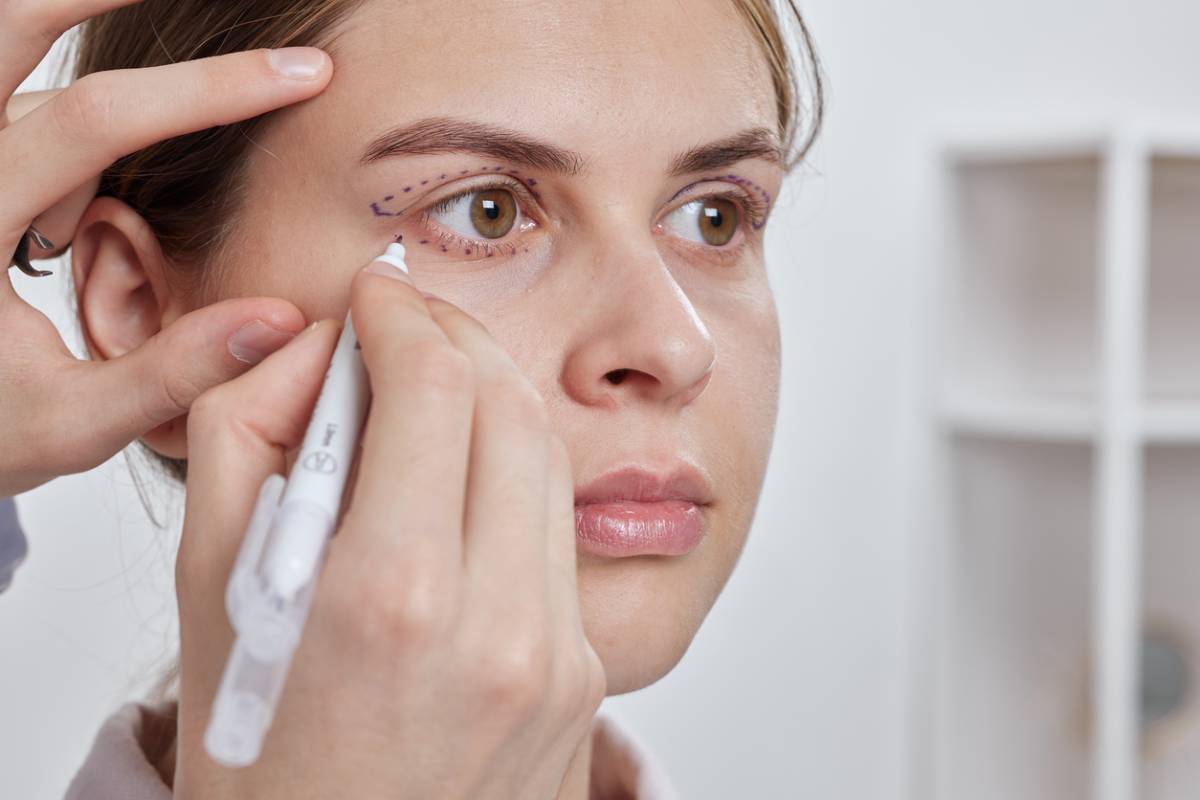Blepharoplasty is a procedure that improves the appearance of your eyelids. It is highly popular as it can open up your eyes and make you look years younger. The natural aging process can result in skin sagging and wrinkles. This occurs around your eyes as the skin is much thinner and more delicate. Aging around your eyes can also be exacerbated by certain lifestyle factors. Poor diet, chronic stress, poor sleep patterns, smoking, and excessive alcohol use. Blepharoplasty can effectively address the signs of aging around your eyes. You may wonder, how is blepharoplasty performed?
How Is Blepharoplasty Performed?
Blepharoplasty is an effective method for upper eyelid enhancement. It offers several benefits and patients report a boost in self-confidence due to the results. Below, you will find the steps involved in the blepharoplasty procedure.
Consultation
The first step in moving forward with blepharoplasty is scheduling a consultation. The consultation involves an examination of your eyelids and a discussion about your medical history. It’s important to ask any questions you have and discuss your expectations with the eyelid and face specialist. You will be provided with a full understanding of what you need to do before and after the procedure. Once it has been determined that you are a good candidate, you can schedule your procedure.
Day of Procedure
On the day of your procedure, you will be provided with anesthesia. Patients often get a combination of local anesthesia and sedation to ensure their comfort. Your eyelids are numbed so you don’t feel a thing. Some patients would like more sedation and general anesthesia may be appropriate. It is important to discuss this at your consultation so you are fully prepared on the day of the procedure.
Once you are sedated and comfortable, the procedure will begin. An incision is made in your upper eyelid. These are small incisions to minimize visible scarring. Once the incision is made, any excess skin is carefully removed. Excess muscle and fat are also removed. From there the muscle is tightened to improve the appearance of your eyes. Once completed, the incisions are closed with small stitches. These are later removed or dissolved depending on the type of stitch used.
Recovery Process
Focusing solely on your recovery after blepharoplasty can ensure your results. The first few days are critical as you should rest. Having someone else help you during the recovery process can make a huge difference. You will notice some swelling, bruising, and minor discomfort during the first one to two weeks. However, taking your prescribed medications after the procedure helps make the recovery process much smoother.
Why Do Patients Get Blepharoplasty?
Blepharoplasty is a procedure that removes excess skin, fat, and muscle around your eyes. It offers both functional and aesthetic benefits. Consider the following reasons why patients get blepharoplasty.
Functional Issues
Sagging eyelids can impact your vision. Excess skin can droop down over your eye. This can make daily activities, such as driving and reading more difficult. Blepharoplasty can easily address these issues. For many patients, this improves their overall quality of life due to the results.
Aesthetic Benefits
Sagging eyelids can make you look much older than you are. It can also make you look tired and grumpy. This negatively impacts your overall appearance. Blepharoplasty involves the removal of excess skin, fat, and loose muscle around your eyes. This can improve your overall facial aesthetic.
Confidence Boost
Looking and feeling good in your skin is important. Aesthetic issues around your eyes can make you feel self-conscious about how you look. This is because your eyes are often the first thing people see when they look at you. Improving the appearance of your eyes improves your confidence and self-esteem.
Eyelid and Face Specialist
If you are interested in blepharoplasty, contact the team at Infocus Ophthalmic Plastic Surgery to schedule your consultation!


